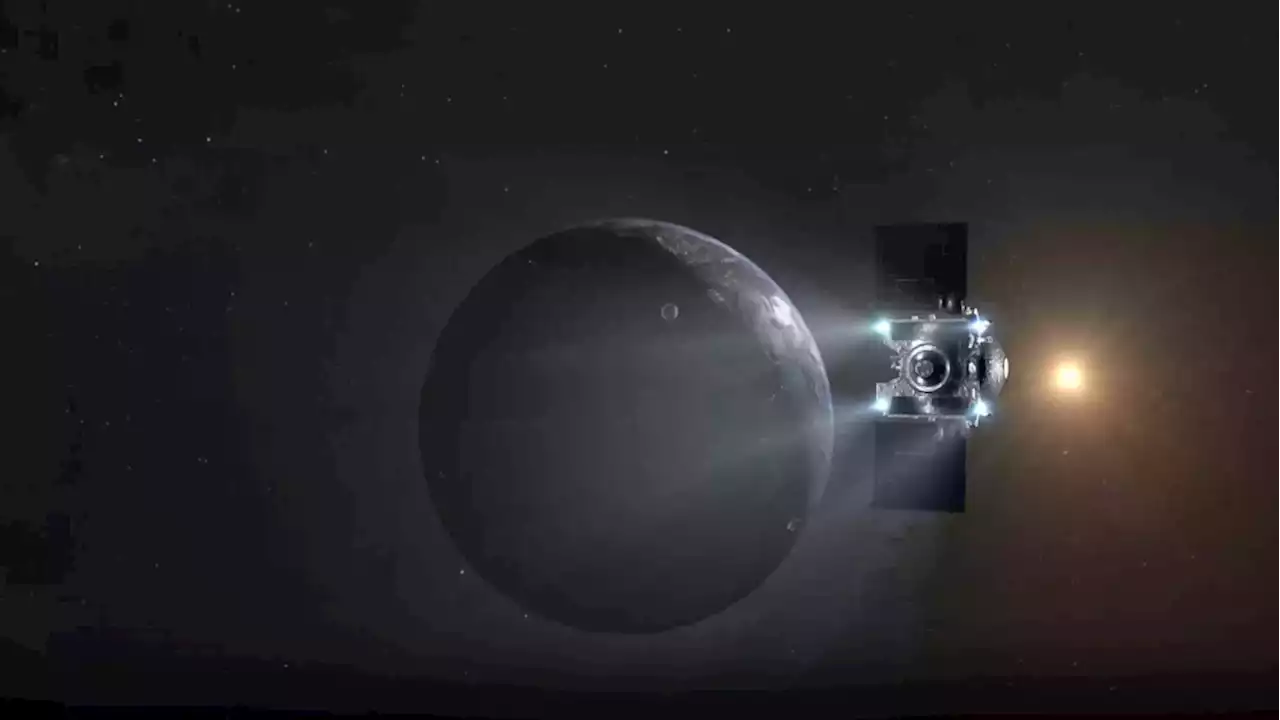In less than a month, a capsule full of NASA's first asteroid samples will hit our atmosphere and sail down to a landing zone in the Utah desert before being carefully contained and transported for analysis. Here's how NASA plans to pull it off – and what it is hoping to learn.
In less than a month, a capsule full of NASA's first asteroid samples will hit our atmosphere and tumble down into the Utah desert, bringing clues to the beginning of our solar system – and maybe even the building blocks of life.
A striped parachute carried the test capsule down to the Utah desert, where it was carefully approached by a team of recovery experts running through the assessments they will need to do when it comes time for the real thing. Canada, as one of the international partners that contributed to the OSIRIS-REx mission, will receive a portion of the sample for study. The Canadian Space Agency provided the OSIRIS-REx Laser Altimeter, a laser scanning system that allowed the spacecraft to find the best location on Bennu to extract samples.
When the spacecraft is four hours away from Earth, NASA will send the final instructions to OSIRIS-REx to point it in the right direction for capsule release. After it releases the capsule, the spacecraft will perform a divert manoeuvre to peel away from the Earth as the capsule continues on its path through space towards Utah.
That's when NASA will have its last chance to cancel the drop if there are any warning signs – the"go or no go" moment. The team has made plans for how to assess damage and still salvage materials in the event of a crash landing due to a parachute not deploying, which happened in 2004 whenThe delicate dance isn't over if the capsule touches down safe and sound in Utah.
The Johnson Space Center is NASA's hub for material from space. It currently houses Apollo lunar samples, meteorites from Antarctica and solar wind ions brought back by the Genesis mission, among other extraterrestrial treasures. The new OSIRIS-REx curation laboratory at NASA’s Johnson Space Center undergoing preparations for completion of the glovebox nitrogen plumbing.
When OSIRIS-REx made contact with the asteroid in 2020, NASA was surprised by how much material was disturbed by the careful touch. She added that although Ryugu and Bennu may visually appear similar, that doesn't mean they are the same.
Nigeria Latest News, Nigeria Headlines
Similar News:You can also read news stories similar to this one that we have collected from other news sources.
 Bryson Barnes helps No. 14 Utah beat Florida in season openerBryson Barnes threw a 70-yard touchdown pass to Money Parks on Utah’s first play of the game, rushed for another score and the No. 14 Utes beat Florida 24-11 on Thursday night in the opener for both teams.
Bryson Barnes helps No. 14 Utah beat Florida in season openerBryson Barnes threw a 70-yard touchdown pass to Money Parks on Utah’s first play of the game, rushed for another score and the No. 14 Utes beat Florida 24-11 on Thursday night in the opener for both teams.
Read more »
 Utah mom who gave YouTube parenting advice arrested on suspicion of child abuseA Utah woman who gave online parenting advice via a once popular YouTube channel has been arrested on suspicion of aggravated child abuse
Utah mom who gave YouTube parenting advice arrested on suspicion of child abuseA Utah woman who gave online parenting advice via a once popular YouTube channel has been arrested on suspicion of aggravated child abuse
Read more »
 No. 14 Utah set to kick off season vs. Florida on TSNThe Utes get a big first test in a season of high expectations as they take on Florida in their opening game of the season. Watch No. 14 Utah vs. Florida LIVE on TSN3, TSN.ca and the TSN App at 8pm et/5pm pt.
No. 14 Utah set to kick off season vs. Florida on TSNThe Utes get a big first test in a season of high expectations as they take on Florida in their opening game of the season. Watch No. 14 Utah vs. Florida LIVE on TSN3, TSN.ca and the TSN App at 8pm et/5pm pt.
Read more »
 Ontario professor part of NASA's geology team for Artemis III moon missionGordon Osinski has spent the last two decades studying craters left behind by meteorites.
Ontario professor part of NASA's geology team for Artemis III moon missionGordon Osinski has spent the last two decades studying craters left behind by meteorites.
Read more »
 Crashed Russian mission left a crater on the moon, NASA images showMOSCOW (Reuters) - Russia's failed Luna-25 mission left a 10-metre wide crater on the moon when it crashed last month after a problem preparing for a ...
Crashed Russian mission left a crater on the moon, NASA images showMOSCOW (Reuters) - Russia's failed Luna-25 mission left a 10-metre wide crater on the moon when it crashed last month after a problem preparing for a ...
Read more »
 Ontario professor part of NASA's geology team for Artemis III moon missionGordon Osinski has spent the last two decades studying craters left behind by meteorites.
Ontario professor part of NASA's geology team for Artemis III moon missionGordon Osinski has spent the last two decades studying craters left behind by meteorites.
Read more »
